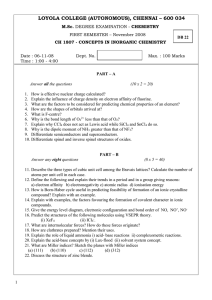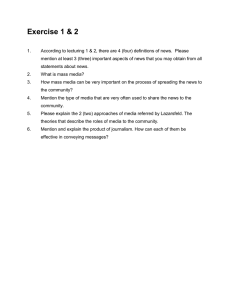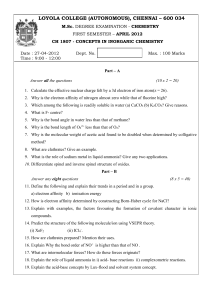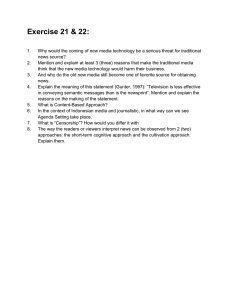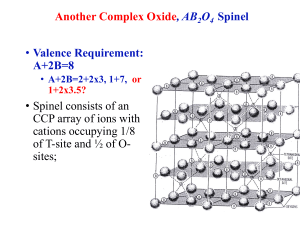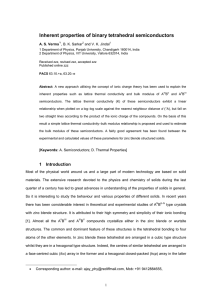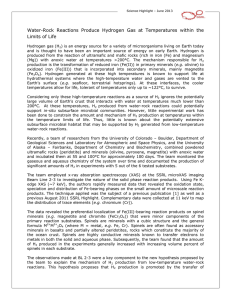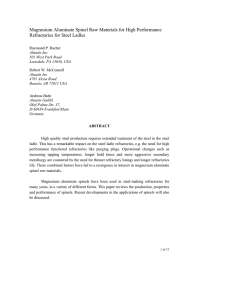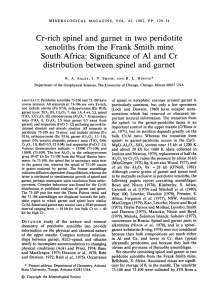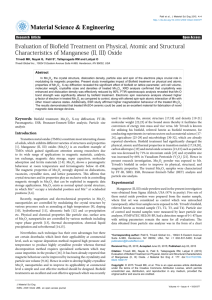LOYOLA COLLEGE (AUTONOMOUS), CHENNAI – 600 034
advertisement
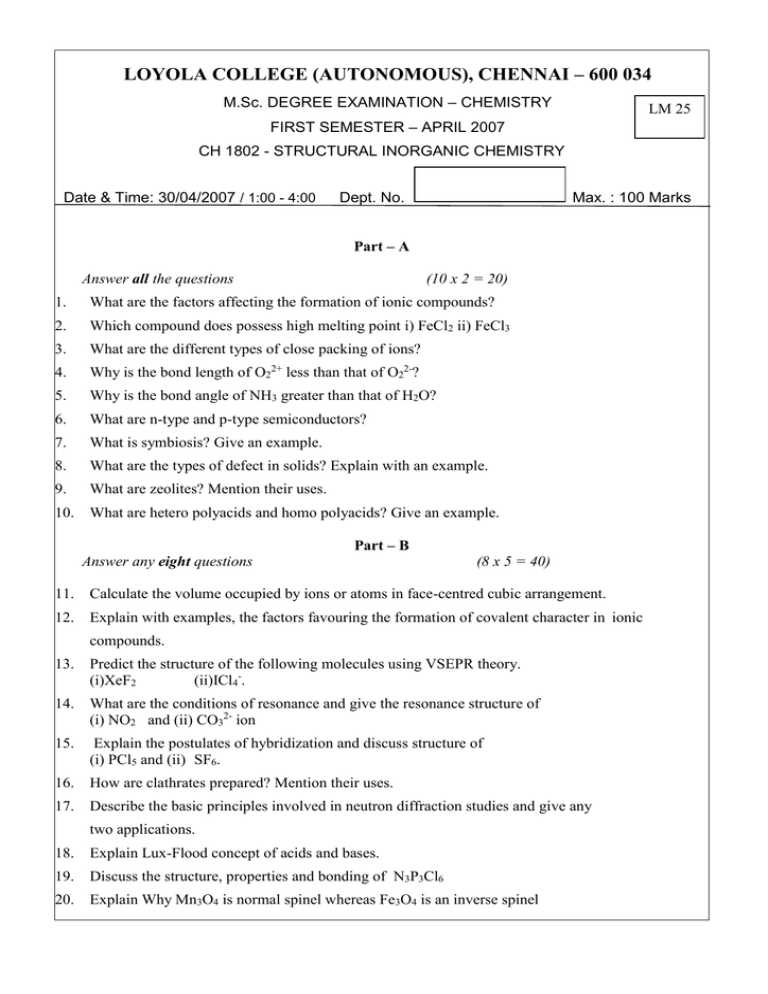
LOYOLA COLLEGE (AUTONOMOUS), CHENNAI – 600 034 M.Sc. DEGREE EXAMINATION – CHEMISTRY LM 25 FIRST SEMESTER – APRIL 2007 CH 1802 - STRUCTURAL INORGANIC CHEMISTRY Date & Time: 30/04/2007 / 1:00 - 4:00 Dept. No. Max. : 100 Marks Part – A Answer all the questions (10 x 2 = 20) 1. What are the factors affecting the formation of ionic compounds? 2. Which compound does possess high melting point i) FeCl2 ii) FeCl3 3. What are the different types of close packing of ions? 4. Why is the bond length of O22+ less than that of O22-? 5. Why is the bond angle of NH3 greater than that of H2O? 6. What are n-type and p-type semiconductors? 7. What is symbiosis? Give an example. 8. What are the types of defect in solids? Explain with an example. 9. What are zeolites? Mention their uses. 10. What are hetero polyacids and homo polyacids? Give an example. Part – B Answer any eight questions (8 x 5 = 40) 11. Calculate the volume occupied by ions or atoms in face-centred cubic arrangement. 12. Explain with examples, the factors favouring the formation of covalent character in ionic compounds. 13. Predict the structure of the following molecules using VSEPR theory. (i)XeF2 (ii)ICl4-. 14. What are the conditions of resonance and give the resonance structure of (i) NO2 and (ii) CO32- ion 15. Explain the postulates of hybridization and discuss structure of (i) PCl5 and (ii) SF6. 16. How are clathrates prepared? Mention their uses. 17. Describe the basic principles involved in neutron diffraction studies and give any two applications. 18. Explain Lux-Flood concept of acids and bases. 19. Discuss the structure, properties and bonding of N3P3Cl6 20. Explain Why Mn3O4 is normal spinel whereas Fe3O4 is an inverse spinel 21. How are metallocarboranes prepared? Mention any one structure. 22. What are silicates? How are they classified? Give an example for each class. Part – C Answer any four questions (4 x 10 = 40) 23. Define lattice energy. How is lattice energy calculated theoretically and experimentally? 24. Explain why the molecule of CO is diamagnetic and NO is paramagnetic, using M.O theory. 25. How does band theory explain the conductance behaviour of conductors, insulators and semiconductors? 26. Explain the Pearson’s concept of hard and soft acids and bases, with examples. Discuss any four applications of this theory. 27. What is radius ratio? Discuss the structures of (a) NaCl (b) Rutile. 28. (i) What are Miller indices? Draw (111) and (110) plane (6) (ii)Apply Wade’s rule to predict the geometry of B10H10 (4) 2- ***** 2
